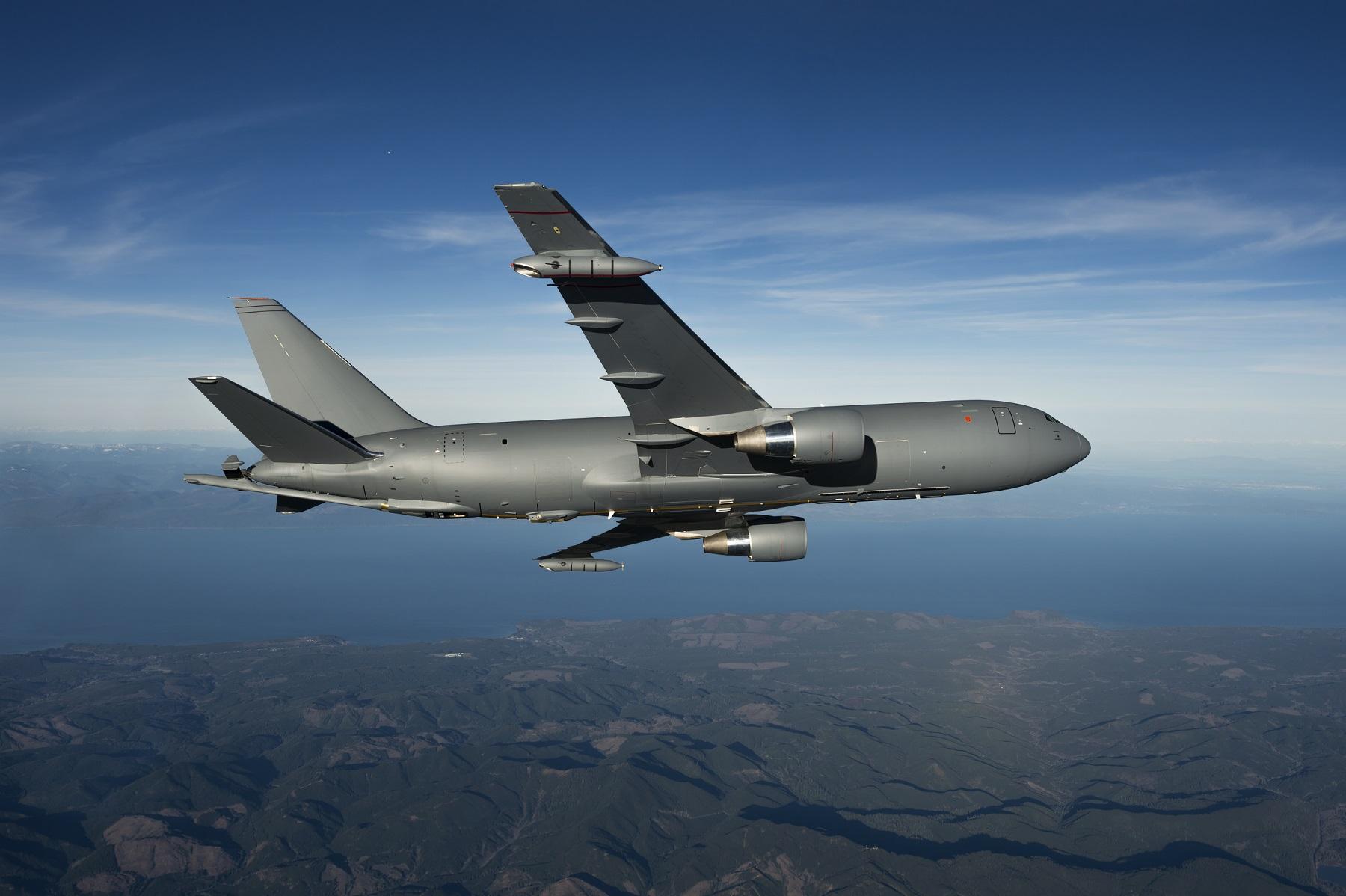
Developing larger and longer-ranged fighters, weaponizing the Boeing KC-46 fleet, and possibly fielding a new type of unmanned, small and stealthy tanker are all now in discussion by U.S. Air Force leaders, assistant secretary of the Air Force Will Roper said on Sept. 23.
As the head of acquisition, technology and logistics, Roper said he and the new chief of Air Mobility Command, Gen. Jacqueline Van Ovost, are “excited” now about the direction of the long-troubled KC-46 program, as the Air Force and Boeing continue to finalize the Remote Vision System 2.0 upgrade.
The KC-46’s turnaround, Roper said, is allowing acquisition and mobility officials to turn their attention to addressing another Air Force refueling problem: How to solve a yawning gap between refueling capacity and operational need for inflight refueling, especially at the forward edge of a ring of contested airspace, where large and, for now, relatively defenseless aircraft such as the KC-46 are most vulnerable.
Building a more survivable and responsive air refueling capability that can be used in a contested war zone was the focus of a meeting this week between Roper and Van Ovost, he said.
“One of those next strategic questions for the Air Force is going to be can you defend a tanker against an onslaught of fighters who know that every tanker you kill, it’s like killing a lot of fighters or bombers or drones that it supports,” Roper said.
Roper prefers not to take a one-size-fits-all solution, such as a single major new acquisition program that buys only one type of aircraft. Instead, the Air Force should evaluate the solution to the contested aerial refueling problem as an architecture, with multiple options that can be dialed back and forth.
One option for reducing demand on tankers is a new fighter aircraft that is designed to carry more fuel.
“Maybe having [the] small, currently sized fighters is not the way to go in [the] future,” Roper said. “And since we’re all abuzz with digital engineering and thinking about what the future fighter force could look like, thinking about bigger fighters is a natural question.”
Another way to make the KC-46 fleet more survivable, and thus operate closer to the forward edge of contested airspace, is to weaponize the aircraft, he said.
“We don’t put weapons and sensors on tankers to shoot down aircraft, but the current KC-46 is a big airplane with the ability to mount sensors and weapons under the wings,” Roper said. “We just don’t do it because we can use a fighter combat air patrol to defend high-value assets.”
The Air Force also may need a different kind of tanker in the future, he said. Two options are possible: A larger aircraft than the KC-46 that could carry more fuel, but needs to stay farther away from potential threats, or much smaller, unmanned and stealthy “micro-tankers” that could operate much closer or even inside defended airspace, Roper said.
“I expect that as we really look at airpower in the truly contested environment that we’ll be looking at fuel very strategically,” Roper said.






Comments
Instead of always looking for the most expensive solution the USAF should order and install the external conformal tanks which Boeing (F-15) and Lockheed (F-16) have already engineered and produced for other customers.
Placing A2A missile capability on the KC-46 (and other large tankers) and also the B-52 would be wise considering near-peer threats are known to be targeting those platforms. With the AIM-260 in development that ordnance would give these platforms the long-range self-defense capability they need vs. taking fighter away from more pressing tasks.
Revive, revise and optimize the YF-23?
Easy, they had to invent new technology to replace the GIB that used to manually drive the boom. That is the biggest delay factor; the best solution, IMO, was to have the boom driver in the traditional spot for now and reserve space up front for then the RVS project was mature.
Other problems in the project are a consequence of poor leadership (being too focused on accounting and sacrificing good engineering to save a few bucks) which has manifested itself across the 737MAX and now 787 programs.